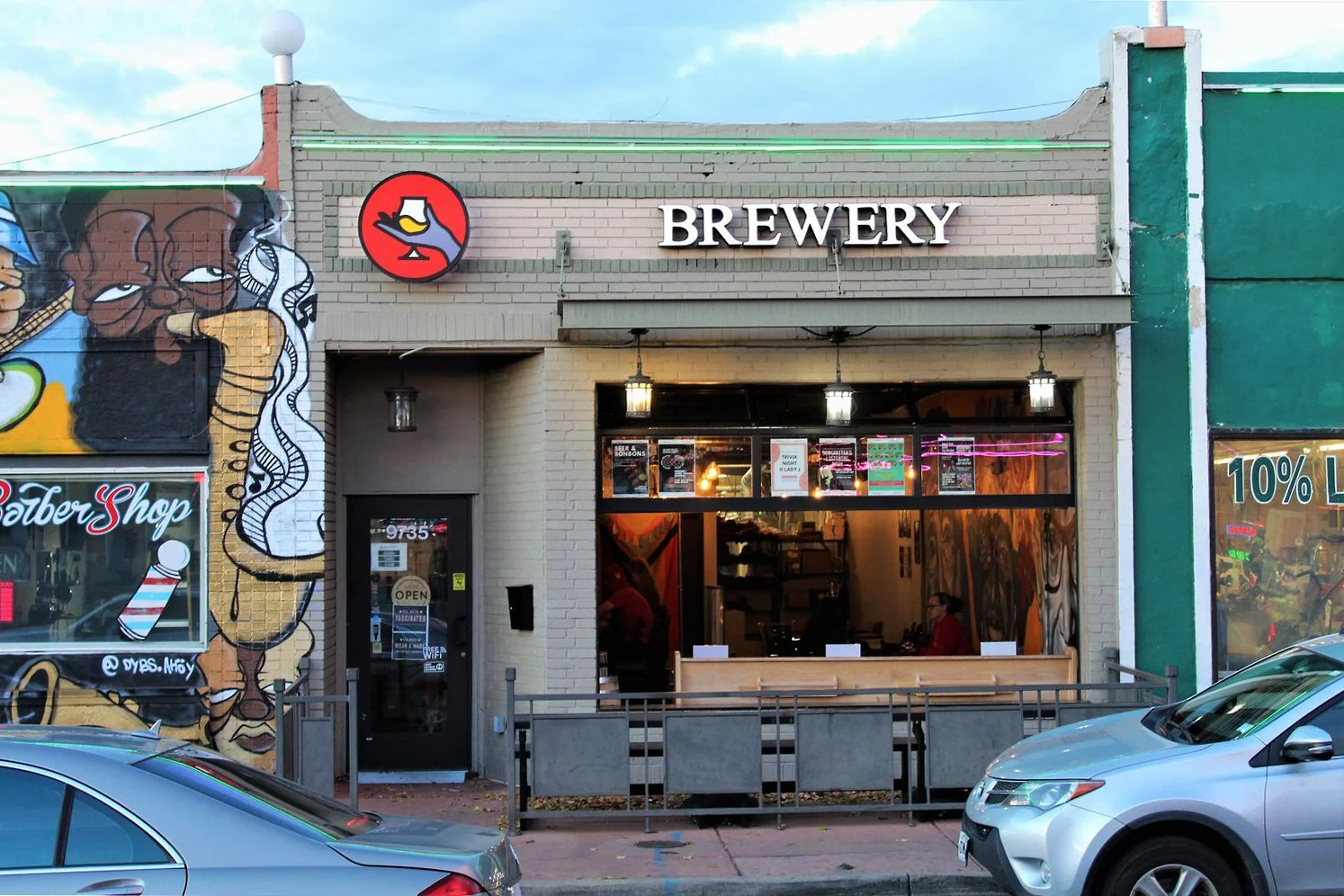The Heart and Soul and Core — Troegs Brewing’s Unlikely Flagship Doppelbock
Kloster Andechs sits atop a hill about 20 miles southwest of Munich, Germany. The hill is ringed by trees, with fields and meadows spreading away to the south and east, forest to the north and west, and small Lake Ammensee visible over the trees. The Benedictine monastery was established in the 11th Century and has been a pilgrimage site for nearly a millennium, known to the devoted as the Holy Mountain because of its reliquary of sacred objects.
John Trogner of Troegs Brewery in Pennsylvania based his iconic Troegenator Double Bock on a beer brewed at the top of that hill halfway around the world, one he had never even tasted when he brewed the first batch twenty years ago. The story of Troegenator speaks to Old World inspiration, the creative mind-meld of siblings, and the expensive risks taken when American “craft beer” was still a scrappy and daring enterprise.
Photography by David Nilsen
John is older now, with a bigger business to be responsible for, but the plucky and mischievous young man who started Troegs in 1997 with his younger brother, Chris, still shows through as he tells me the story of Troegenator. It all began with a fateful trip to Bavaria.
While beer lovers in the States can now find excellent examples of European-influenced styles in taprooms and bottle shops, the imported beers available a quarter century ago were hard to find and often in poor condition. The only way for the Trogner brothers to understand how they were supposed to taste was to follow them to their source. On one such trip, Chris drank his way through southern Germany, and ended up at Andechs. He was there on his own sort of pilgrimage, climbing the Holy Mountain to a discovery that would come to define his fledgling brewery back home.
“He went to Andechs and was blown away by the malt complexity of a beer that was 8% ABV but was still refreshing and crisp and not cloyingly sweet,” explains John. They wanted to create their own Doppelbock, but there was a problem: John was the head brewer, and he hadn’t tasted this beer that had affected his brother so profoundly.
“You can imagine how incredibly challenging it is to describe flavors and aromas that you’ve never experienced before,” he says. “There weren’t any examples he could hand me. We would go through multiple recipe renditions and be our own worst critics.”
Eventually, they brewed a batch that had the characteristics that made that Andechs beer so special, but tasted uniquely their own. Many years later, John was able to walk up that hill overlooking Lake Ammensee and taste the original for himself.
“We weren’t trying to copy the recipe, we were trying to take something we were inspired by and put our spin on it,” he says. “I was shocked by how close we got, especially from a texture standpoint. Our flavors were a little different, but we hit that crispness and that balance between malt and hop and just enough of that yeast character. I guess Chris is good at describing beer.”
***
Developing Troegenator was difficult for financial reasons as well. Doppelbock is a strong lager style that requires a lot of time in tanks and a lot of malt, and since the Trogners wanted the most authentic Doppelbock they could get, they used imported German malt. The expenses of pilot batches that weren’t hitting their target at first added up.
“We were barely treading water as a company, so we had to be really careful with how we spent our resources,” John recalls. “Troegenator was the biggest project we took on. We built our first brewery too big, so we could only brew on our 20 bbl system. That was a lot of money in grain, and who knew if anyone would even know what to do with a big, malty beer like this anyway?”
At the time, Pennsylvania law didn’t allow breweries to have their own taprooms, so Troegs had no way to recoup expenses on the test batches. Their only options were to give them away two ounces at a time on weekend brewery tours or dump them down the drain. They persevered, and eventually hit what they were aiming for.
“To be malty but also bright is super challenging,” John explains. “There are four components you have to get right to nail a Doppelbock: water chemistry, using the kilned malts from Germany, just enough hops to brighten it up so it doesn’t become cloyingly sweet, and a well-planned mash.”
““It’s such a quintessential beer.””
Many classic Doppelbock recipes employ a decoction mash to get the mouthfeel of this potentially heavy beer just right, but when Troegenator was first developed, Troegs didn’t have the physical means to do so. They compensated with a complex multi-step mash with rests at 138°, 142°, 148°, 155°, and 158°F [59°, 61°, 64°, 68°, 70°C].
“I don’t know if it’s all needed, but once we nailed it, we didn’t mess with it,” jokes John. “If I wrote the recipe today, I would probably use decoction.”
When Troegs moved to their current 100 barrel production facility in 2011, they built the entire facility around the recipes they already had, especially their heavyweight Doppelbock.
“The entire malt side of the brewery is built around brewing Troegenator,” he explains. “The mill’s for Troegenator, the mashtun’s for Troegenator, the lauter tun’s for Troegenator. The engineering aspect of building an entire brewery around being able to brew this beer consistently and constantly really does encompass the entire soul of Troegs.”
***
Once the brothers nailed their recipe, there was still the challenge of consumer education and acceptance. Not many people in central Pennsylvania knew what a Doppelbock was in 2001. They stopped even using the term and just referred to the beer by its name, using tastings, tours, and festivals to get people to try it. John is continually surprised by how many people tell him they got into craft through Troegenator. It isn’t the brewery’s best-seller—that distinction goes somewhat predictably to flagship IPAs Perpetual and Hop Cycle—but it’s right behind them.
“It’s kind of an anti-industry beer,” he reflects. “Very few breweries here have a Doppelbock, so it’s a point of differentiation. If they do, they have it seasonally. To have it year-long has really helped us reach an audience that isn’t hop-forward.”
Some of its success has been driven by the label art, initially designed by artist Ryan Bowman. The label depicted the face of a Viking-esque character with a mane of white hair and horns growing from his forehead. Stern eyebrows were tempered by a slight grin. It’s been reimagined over the years, with the current version by artist Josh Noom showing this character in profile, facing sheaves of barley. It’s an intriguing but approachable mascot and one that aptly represents the burly but light-hearted nature of the beer.
““If it’s too sweet, it makes your teeth feel like they’re wearing sweaters.””
In an effort to make this beer even more approachable, Troegs held a homebrewing contest in 2019 in which contestants brewed with Troegenator wort. Local homebrewers flocked to the brewery to pick up the unfermented wort and get to work on their own versions. The winning beer was brewed by Kristen Richards, who’s been homebrewing since 1995.
“I’ve loved this beer for years,” says Kristen of Troegenator. “It’s such a quintessential beer, to begin with, and letting us come in and pick up the wort and use it as a blank canvas was so cool.”
She brewed her version with toasted coconut, vanilla, and cacao nibs, and named it Coco-Nator. The Troegs team was impressed, and after awarding Kristen first place they decided to brew the beer and can it themselves.
“When they put it in cans, they used the beer name I’d used in the contest and put my name on it, which was pretty spectacular, to say the least,” she recalls with excitement. “That contest helped launch my part-time professional brewing career at Cold Springs Inn & Brewing Company.”
***
The style we now know as Doppelbock was first brewed in the late 18th century at the monastery of St. Francis of Paola in Munich to honour the order’s namesake, and its malty richness took some of the sting from the brothers’ periods of fasting from solid food. The beer was likely poorly attenuated, making it quite different from the crisp drinkability John returned to repeatedly in our conversation.
“It can’t lay on your tongue for too long,” he says. “If it’s too sweet, it makes your teeth feel like they’re wearing sweaters.”
Troegenator offers a bold array of aromas and flavours in a dry, well-attenuated package. Notes of fruitcake and black mission figs nest in layers of dark bread, toast, and subtle caramel. The Trogners engineered their brewery around this beer, and it pulls off the trick of all good engineering: hiding tremendous complexity behind a simple, clean facade.
“If I had one beer for the rest of my life, that’s my beer,” John tells me. “If I’m stranded on an island, that’s my beer. If I want to represent Troegs to someone who hasn’t had it before, that’s one of the beers I make sure they have. It’s part of the heart and soul and core of Troegs.”



























